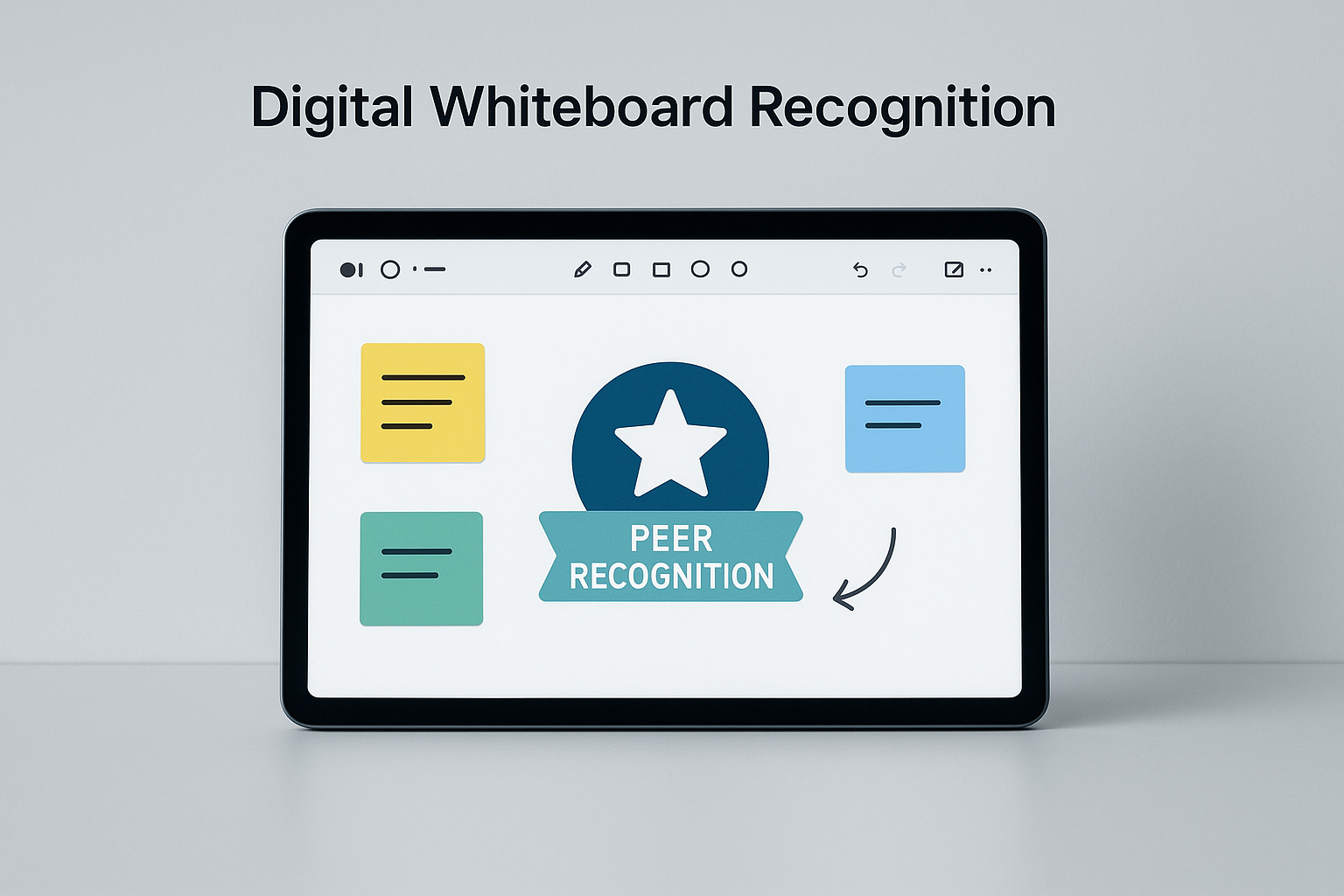As businesses embrace digital transformation, the integration of peer-to-peer recognition within whiteboard-first teams is becoming increasingly vital. Digital whiteboards serve as dynamic platforms for collaboration, and embedding recognition tools into these systems can significantly enhance team morale and productivity.
In today’s digital workplaces, effective team collaboration is crucial for success. Whiteboard-first teams, which prioritize digital whiteboards for their interactions, benefit greatly from the seamless communication and creativity these tools offer. By incorporating peer-to-peer recognition into these platforms, teams can boost engagement and foster a culture where achievements are celebrated, enhancing overall team spirit.
The Impact of Recognition in Whiteboard-First Teams
Peer-to-peer recognition plays a critical role in enhancing team morale and driving productivity. This form of peer-to-peer recognition supports strong employee recognition habits that reinforce appreciation at every level of the organization. In collaborative environments, consistent acknowledgment strengthens collaboration and builds trust. Whiteboard-first workflows, often supported by an online whiteboard, make recognition more visible in real time. In hybrid teams that rely on virtual visual workspaces, the online whiteboard becomes a shared space where appreciation is seen and felt collectively, contributing to a strong digital workplace culture.
Digital platforms within the HR tech ecosystem have revolutionized the recognition process, making it more immediate and meaningful. Tools like Flaree allow teams to offer feedback during or after brainstorming, reinforcing the value of employee recognition. Values-based badges and Flaree Cards serve as tangible acknowledgments tied to organizational principles. These values-based badges encourage alignment with purpose, while Flaree Cards create personal, thoughtful moments of appreciation. Sending Flarees amplifies recognition in visible ways, especially when teams choose Flaree instead of Kudos to emphasize a more personalized approach. Some teams adopt Flaree instead of Kudos specifically to promote authentic praise tied to contributions rather than routine praise.
Research shows that organizations with strong recognition programs see significantly higher employee engagement. In visual brainstorming settings, collaboration is transparent, and achievements are seen as they happen. The use of a shared online whiteboard emphasizes group ownership of outcomes, and hybrid teams benefit from equitable acknowledgment regardless of physical presence. The digital workplace becomes a hub where appreciation is ongoing, promoting a culture where meaningful contributions are consistently visible.
Integrating Recognition Tools into Digital Whiteboards
Embedding recognition features from platforms like Flaree directly into digital whiteboards transforms them into motivation hubs.
“When teams can give recognition in the flow of collaboration—right on the whiteboard—it turns appreciation into a shared habit. That immediacy builds stronger culture and deeper connection, especially in hybrid teams.”
— Ewa Sadowska, HR Expert at Flaree
These integrations encourage peer-to-peer recognition naturally during collaboration, without interrupting workflow. By enabling teams to send Flaree Cards or award values-based badges mid-session, the recognition becomes part of the creative process.
This approach strengthens digital workplace habits and reinforces a shared sense of culture. Teams can celebrate progress with Flarees, recognizing individual or group achievements. Such integrations are particularly impactful in HR tech solutions designed for distributed or hybrid teams.
Strategies for Implementing Effective Recognition Programs
To implement recognition effectively, begin by linking recognition actions to organizational goals and behaviors. Programs should reflect authentic organizational culture while encouraging meaningful participation. Clearly defining when and how Flaree Cards and Flarees are used ensures consistency.
Workshops using an online whiteboard help introduce employee recognition expectations and gather team feedback. Integrating chat tools so team members can send appreciation — sometimes choosing Flaree instead of Kudos — strengthens immediacy and emotional connection.
Using Analytics to Enhance Peer Recognition
Analytics play a central role in measuring recognition effectiveness. Tracking recognition activity via analytics dashboards helps organizations identify trends in employee engagement and evaluate whether recognition supports desired culture outcomes.
Insights from usage patterns can guide HR tech teams in refining recognition strategies and supporting operations leaders. Understanding how teams use values-based badges, how frequently they issue Flarees, and whether Flaree Cards drive meaningful interaction allows organizations to continuously improve recognition’s impact across whiteboard-first and hybrid teams environments.
Published: November 13, 2025




